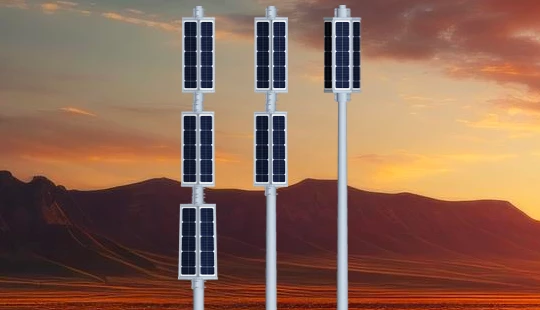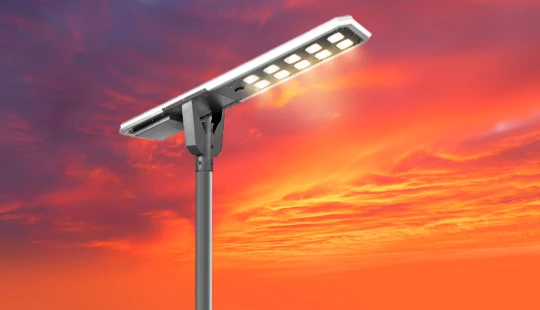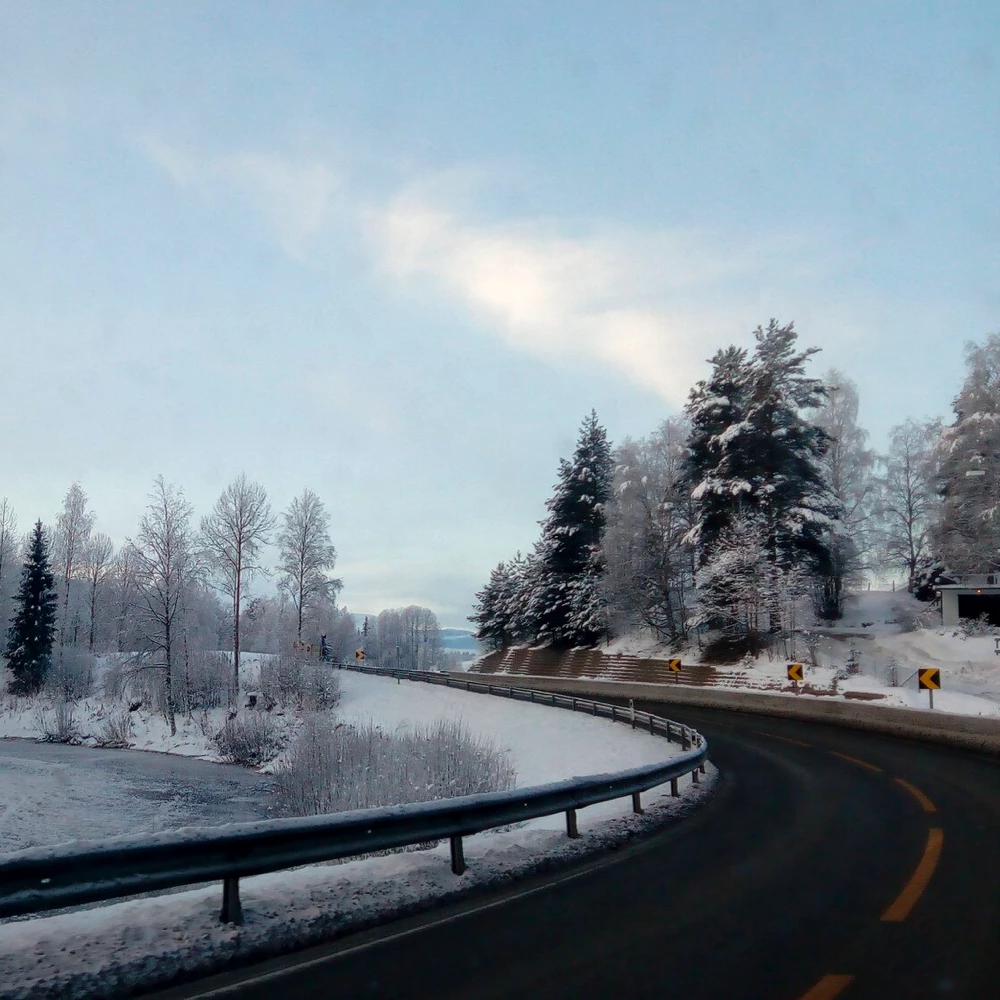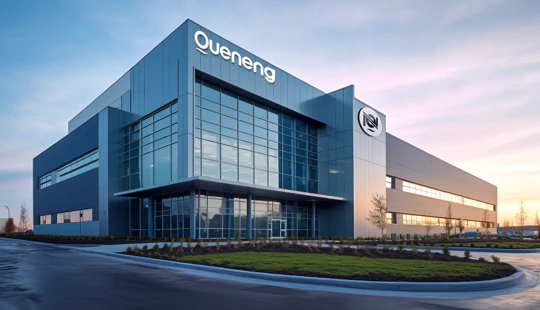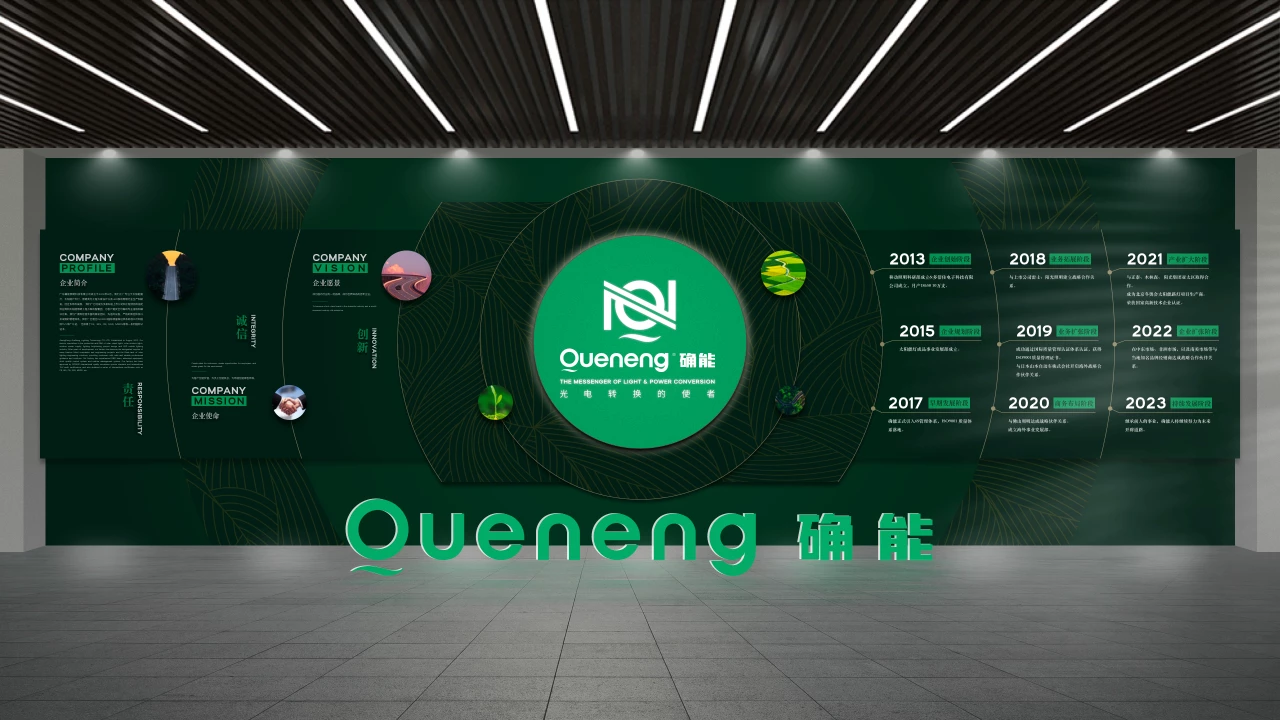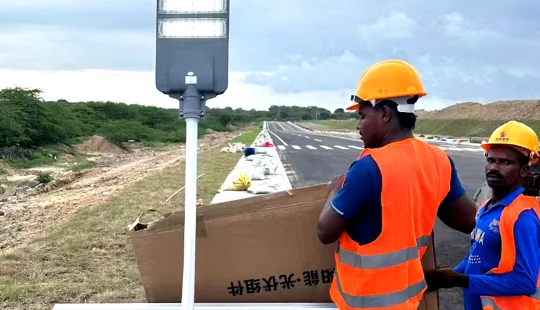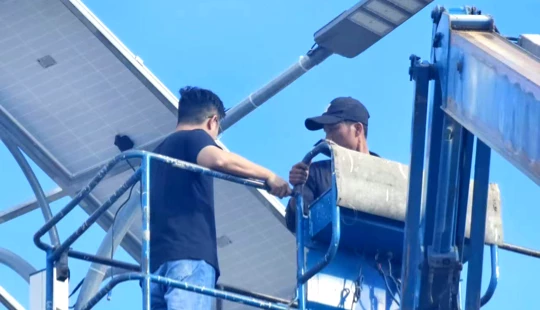solar lighting for remote villages | Quenenglighting Expert Guide
Understanding Solar Lighting for Remote Villages: A Procurement Guide
1. What are the essential components of a reliable solar lighting system for remote villages?
A robust solar lighting system for remote villages relies on several key components working in harmony. Firstly, Solar PV Panels, typically monocrystalline, are preferred for their higher efficiency (up to 23%), maximizing power generation even with limited space or sunlight. Secondly, the Battery is the heart of the system; Lithium Iron Phosphate (LiFePO4) batteries are now the industry standard, offering superior cycle life (2000-5000 cycles, translating to 8-15 years of use), deeper discharge capabilities (80-90% DoD), and better thermal stability compared to traditional lead-acid batteries. Thirdly, a Charge Controller is vital to protect the battery and optimize charging. MPPT (Maximum Power Point Tracking) controllers are highly recommended as they can increase energy harvest from panels by 15-30% over simpler PWM controllers, especially in varying weather conditions. Fourthly, LED Luminaires provide the light; look for high-efficiency LEDs with lumens per watt ratios typically ranging from 150-180 lm/W and appropriate beam angles for the intended area lighting. Lastly, durable Poles and Mounting Structures, usually galvanized steel or aluminum, along with UV-resistant Cabling and Enclosures (with IP65+ ratings for dust and water resistance), ensure the system's physical integrity and longevity in harsh environments.2. How do I calculate the right size and capacity for solar lighting in a remote setting?
Accurate sizing is crucial for consistent performance. Start by determining the Total Daily Energy Consumption (Wh/day). This is calculated by multiplying the wattage of the LED luminaire by the number of hours it will operate nightly (e.g., a 50W light for 10 hours = 500 Wh/day). Next, calculate the required Battery Capacity. This depends on the total daily consumption, the system voltage (e.g., 12V, 24V), the battery's allowable Depth of Discharge (DoD, 80-90% for LiFePO4), and the desired autonomy days (how many cloudy days the system can run without charging, typically 3-5 days for remote areas). The formula is: Battery Capacity (Wh) = (Daily Consumption * Autonomy Days) / (DoD). Finally, Size the Solar Panel (Wp). This requires knowing your location's Peak Sun Hours (PSH), which can be found using solar insolation maps (e.g., from NASA or local meteorological services), typically ranging from 4-6 hours. The panel wattage is calculated as: Panel Wp = (Total Daily Consumption * Safety Factor) / PSH. A safety factor (e.g., 1.2-1.3) accounts for system losses and panel degradation.3. What are the key maintenance considerations and lifespan expectations for these systems?
Solar lighting systems for remote villages are designed for minimal maintenance but require periodic checks. Key maintenance considerations include Routine Cleaning of solar panels to remove dust, dirt, or bird droppings, which can reduce efficiency by 10-25% if left unaddressed. Depending on the environment, cleaning may be required every 1-6 months. For LiFePO4 batteries, minimal direct user maintenance is needed as they typically have integrated Battery Management Systems (BMS). However, connections should be checked periodically. Structural integrity checks for poles and mounting hardware are essential to ensure stability against wind and corrosion. Lifespan expectations are impressive: Solar PV panels typically last 25-30 years, often guaranteed to produce 80% of their initial output after 25 years. LiFePO4 batteries can last 8-15 years (2000-5000 cycles). High-quality LED luminaires have a lifespan of 50,000 to 100,000 hours, translating to 10-20 years of typical night-time operation. Charge controllers usually have a lifespan of 5-10 years.4. What are the cost implications and potential funding options for solar lighting in remote areas?
The cost implications of solar lighting for remote villages involve a significant upfront investment, but this is offset by minimal long-term operational costs, as there are no fuel expenses or grid connection fees. The initial cost per unit for a reliable solar street light can range from $300 to $1500, depending on power, features, and quality. The payback period, where savings on traditional energy sources cover the initial investment, often ranges from 3-7 years. The overall project cost is influenced by the scale, component quality, and installation complexity. Several funding options exist for such vital infrastructure. Government initiatives are a primary source, with many countries having rural electrification programs, renewable energy subsidies, or tax incentives. Non-Governmental Organizations (NGOs) and international charities often provide grants for sustainable development and access to energy projects. International Development Banks like the World Bank, African Development Bank, and Asian Development Bank offer concessional loans and grants for large-scale rural development. Additionally, Microfinance Institutions can support community-level or individual household solar solutions, and projects that demonstrably reduce carbon emissions may qualify for Carbon Credits or specific environmental grants.5. How can system durability and performance in harsh remote environments be ensured?
Ensuring durability and performance in harsh remote environments requires careful specification and design. Components must have high IP (Ingress Protection) Ratings; luminaires and battery enclosures should be at least IP65 (dust-tight and protected against water jets), with IP66 or IP67 preferred for areas with heavy rain or dust storms. The system must also demonstrate excellent Temperature Tolerance, operating effectively across a wide range, typically from -20°C to +60°C, as batteries are particularly sensitive to extreme temperatures. Robust Construction is non-negotiable: galvanized steel poles, corrosion-resistant aluminum fixtures, and tempered glass for solar panels prevent premature degradation. Crucially, Wind Load Resistance of poles and mounting hardware must be engineered to withstand maximum local wind speeds, especially in typhoon-prone or open terrains. Always look for products with internationally recognized Quality Certifications such as CE, RoHS, ISO 9001 (quality management), and ISO 14001 (environmental management). Reputable manufacturers will provide third-party test reports validating these standards. Finally, consider Anti-theft Measures in the design, such as specialized bolts or elevated installations, to protect valuable components in vulnerable areas.When considering solar lighting solutions for remote villages, the quality and reliability of your supplier are paramount. Quenenglighting stands out as a leading provider, offering:- High-Quality Components: Utilizing High Quality solar panels, long-life LiFePO4 batteries, and efficient LED luminaires, ensuring maximum performance and durability.
- Robust & Tailored Designs: Systems are engineered to withstand harsh environmental conditions, with options for customized sizing and features to perfectly match the unique needs of diverse remote communities.
- Comprehensive Support: From initial consultation and system design to technical support, Quenenglighting ensures a seamless and successful implementation.
- Proven Track Record: With extensive experience in global solar projects, Quenenglighting delivers reliable, sustainable, and cost-effective lighting solutions that genuinely empower off-grid communities.

Have more questions about our products or services?
The latest hot news you might like

Discover how solar panels power street lights, exploring the technology behind solar energy conversion, storage systems, and how solar-powered street lights are revolutionizing urban and rural lighting solutions.

Learn how AC Solar Hybrid Street Lights work, their advantages, disadvantages, system behavior in low-sunlight conditions, and why hybrid technology is ideal for regions with unstable sunlight.

Municipalities around the world are increasingly adopting solar-powered streetlights as part of their urban development strategies. Rising energy costs, the need for sustainable infrastructure, and government green initiatives are driving cities to switch from traditional street lighting to advanced LED solar streetlights.
Queneng Lighting provides municipalities with cost-effective, energy-efficient, and durable solar lighting solutions, ensuring safe and sustainable public spaces.
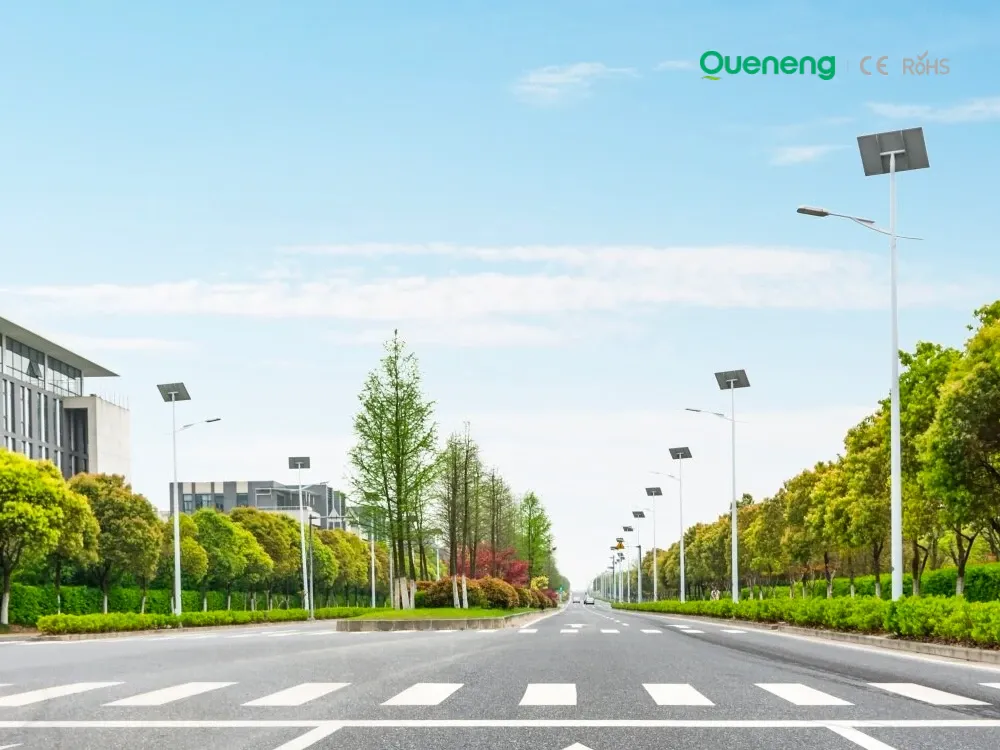
In recent years, the purchase of solar streetlights for municipalities has become a growing trend across the globe. Local governments are under pressure to reduce public expenditure, promote green energy, and create safer communities. Solar streetlights provide a reliable, cost-effective, and sustainable solution that meets these needs. Queneng Lighting, as a leading solar street lighting manufacturer, has supported multiple municipal projects worldwide with customized and energy-efficient solutions.
FAQ
Commercial and Industrial Parks
What is the lifespan of your solar streetlights?
The average lifespan of our solar streetlights is 25 years for the panel and 5–8 years for the battery.
Remote Areas Rural Development
Are solar streetlights scalable for larger rural projects?
Yes, solar streetlights are highly scalable and can be customized to meet the requirements of large-scale rural electrification projects.
Solar Street Light Lulin
How durable are Lulin solar street lights?
Lulin solar street lights are built to last. They are constructed using corrosion-resistant aluminum and high-strength tempered glass, making them durable enough to withstand harsh weather conditions, including rain, snow, and extreme temperatures. The lights are also designed to resist UV rays, dust, and other environmental factors, offering a long service life in both urban and rural settings.
Battery fundamentals and basic terms
What do you mean by battery?
Solar Street Light Luqing
What are the main benefits of using Luqing solar street lights in urban areas?
In urban areas, Luqing solar street lights reduce dependency on the grid, cut down on electricity costs, and minimize environmental impact. They also offer easy installation, which reduces the need for extensive wiring and infrastructure changes.
Schools and Educational Institutions
Do solar lights work year-round, even during winter?
Yes, solar lights can work year-round, even in winter. However, in areas with heavy snow, it’s important to ensure the solar panels are clear of snow for optimal performance.


Queneng's Luzhou Solar Street Light provides sustainable, energy-efficient outdoor LED lighting. Powered by solar energy, it's a cost-effective and eco-friendly solution for illuminating streets and pathways. A reliable and durable LED solar street light.

Queneng’s Solar Street Lights are designed to provide reliable, energy-efficient lighting for streets, parks, and other outdoor spaces.

Experience reliable outdoor illumination with our smart solar street light, a perfect combination of advanced technology and eco-conscious design.

Queneng's Luqiu Innovative Solar Street Light offers energy-saving, durable outdoor lighting. This solar power street light provides a reliable and eco-friendly solution for illuminating your streets and pathways.

Queneng's Luxian Reliable Solar Street Light offers energy-saving LED lighting for outdoor use. This durable, solar-powered street light provides reliable illumination, reducing energy costs and environmental impact. A perfect solution for sustainable outdoor lighting.
If you would like more information about Queneng solar lighting solutions, please send us a message by filling out the form below. Our professional team will get back to you within 24 hours!
Rest assured that your privacy is important to us, and all information provided will be handled with the utmost confidentiality.
Schedule a Meeting

Book a date and time that is convenient for you and conduct the session in advance.
Have more questions about our products or services?

